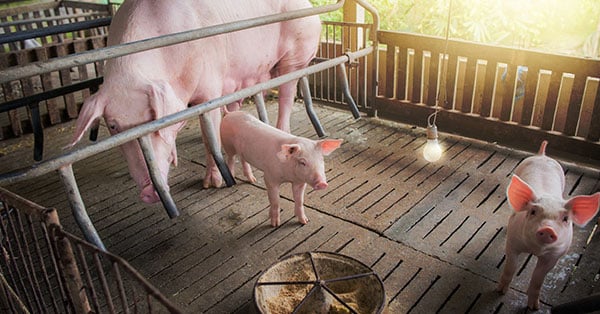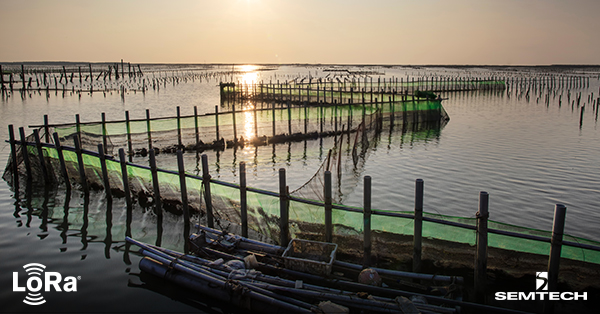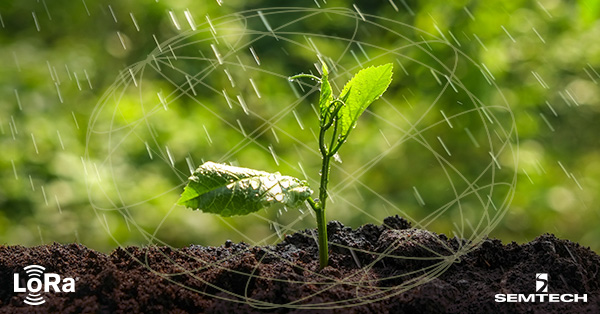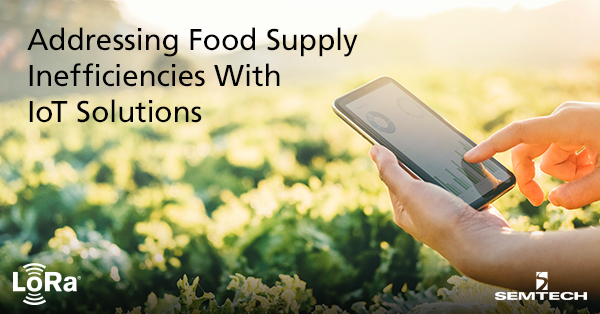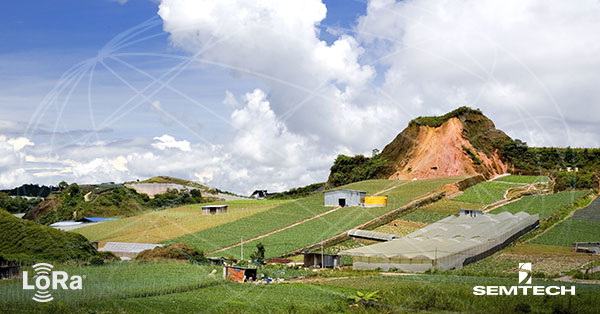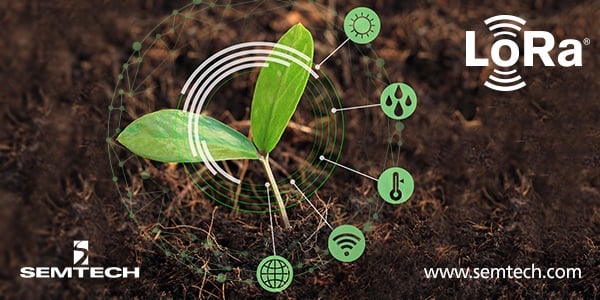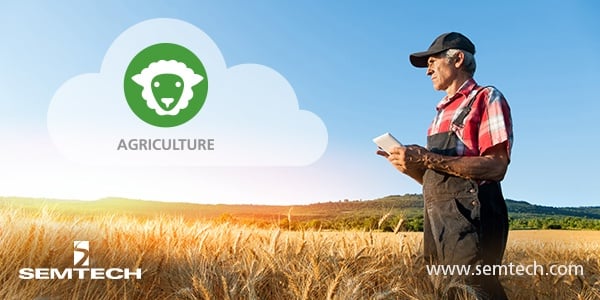Intensive pig farming, also known as the ‘intensive piggery system’, has become the primary method of farming in the pig industry. According to this method, pigs are housed indoors and confined in individual stalls or straw-lined sheds at high stocking density, while keeping pigs of similar ages to live together in large crowds under common environmental settings. By doing so, feeding efficiency is significantly improved, and emerging technologies are often employed to maintain pig health and safeguard pig growth - monitoring various environmental parameters inside the barns with wireless temperature and humidity sensors is an exemplary case in point.
Smart Agriculture
The New South Wales Department of Primary Industries (NSW DPI) launched its $6.7 million AUD Climate Smart Pilots project in 2018. The program trials digital technologies to improve the information generated for farmers regarding natural resources and climate variability across fisheries, horticulture and livestock sectors. As temperatures warm, rainfall regimes change and seasons shift, innovative Internet of Things (IoT) technology can provide early warnings, input control and new ways to manage farming systems.
Tags: LoRa, Smart Agriculture, Wireless RF, Internet of Things, Smart Environment
As one of the oldest industries, agriculture has existed for thousands of years in China. It is the foundation of the national economy and the most fundamental for China to achieve sustainable development. However, with the transformation of our economic structure in recent years, the agriculture industry is facing tough challenges posed by factors such as the increasing shortage of agricultural labor force (farmers increasingly turning to migrant workers), the improper use of fertilizers and pesticides, and the shortage of water resources. How to achieve refined, green and sustainable development of agriculture is the key problem to be addressed in China and even across the world.
Tags: LoRa, Smart Agriculture, Wireless RF, Internet of Things
Hunger Decimates Communities Worldwide
World hunger is a catastrophic issue facing millions of people, and it is on the rise. Globally, around 690 million people go to bed hungry each night, and this figure is expected to increase to 840 million people by 2030.
Tags: LoRa, Smart Agriculture, Smart Cities, Wireless RF, Internet of Things, ESG
IHS Markit predicts up to 43 percent of all low power wide area networks (LPWANs) will be based on Semtech’s LoRa® devices and the LoRaWAN® protocol by 2023*. As of December 2019, more than half a million LoRa-enabled gateways have been deployed globally, supporting 135 million LoRa-based end nodes**. With the global adoption of Internet of Things (IoT) solutions and the growing market share of LoRa-enabled applications, it is becoming more and more difficult to identify a business segment that could not benefit from some level of connected devices. With new LoRa use cases being announced regularly, and growing numbers of worldwide LoRaWAN network deployments (public or private), it seems the only limit to these applications is the imagination of the developers and system integrators solving real world business challenges today.
Tags: LoRa, Smart Homes & Buildings, Smart Agriculture, Smart Utilities, Smart Supply Chain Logistics, Smart Cities, Wireless RF, Internet of Things, Smart Buildings, Smart Homes, Smart Water Metering, Smart Electricity Metering, Smart Gas Metering, ESG
Inconsistency in crop yield is a major concern for farmers. Even with green houses presenting a controlled environment for crop growth, pests and disease are unavoidable. Additionally, a farmer’s lack of knowledge on the conditions in the farm’s soil presents further challenges. The amount of fertilizer used on crops is often left up to the farmer’s discretion. This usually results in over- or under-dosing, which affects crop growth directly. Human error has the largest impact on a crop's yield, with inefficient or inconsistent irrigation and errors in fertilization having serious negative effects on crop health.

In the past five years, farmers in the Cameron Highlands, which are located 250 kilometers from Kuala Lumpur, Malaysia, have taken the initiative to implement a simple monitoring system for their farms’ soil health. However, cost and connectivity presented a serious challenge for the farmers. Smarter solutions and machine-to-machine (M2M) services are often expensive and not available in rural areas. End users, typically the farmers themselves, are naturally very concerned with a solution’s power consumption, availability and reliability, as these factors directly affect the cost to deploy and operate these solutions. For the Cameron Highlands, the region’s various hills and valleys created additional challenges for service providers and reduced network signal strength. As a result, the farmers turned to solutions based on Semtech’s LoRa® devices and the LoRaWAN® protocol.
Tags: LoRa, Smart Agriculture, Smart Utilities, Wireless RF, Internet of Things, ESG
According to recent reports, between 70% and 80% of agricultural greenhouse-gas emissions, such as nitrous oxide, come from the production and use of nitrogen fertilizers. Farmers need real-time visibility into soil conditions while working in their fields. During growing season, manual soil tests fail to provide the data growers need and this can cause farmers to either over fertilize or under fertilize, harming profits and/or the environment. Teralytic, a manufacturer of wireless soil sensors, implemented LoRa® devices and wireless radio frequency technology (LoRa Technology) in its wireless sensor to detect nitrogen, phosphate and potassium (NPK) levels in soil to help farmers reduce waste and to improve crop yields.
Tags: LoRa, Smart Agriculture, Wireless RF, Internet of Things, ESG
Only 3% of the world’s water is accessible freshwater*. Of that, more than 600 gallons per day per person in the U.S. is being diverted for farm irrigation and livestock use. Monitoring soil moisture levels helps farmers to make effective and smart irrigation decisions. Too much water in the soil leads to waterlogged areas and a potential for plant illness or death, while too little water will harm crop growth.
Tags: LoRa, Smart Agriculture, Wireless RF, Internet of Things, ESG
In a world of instant gratification, it’s easy to forget there was once a universe without phones, electricity or heavy machinery.
Tags: LoRa, Smart Agriculture, Wireless RF, Internet of Things, ESG
